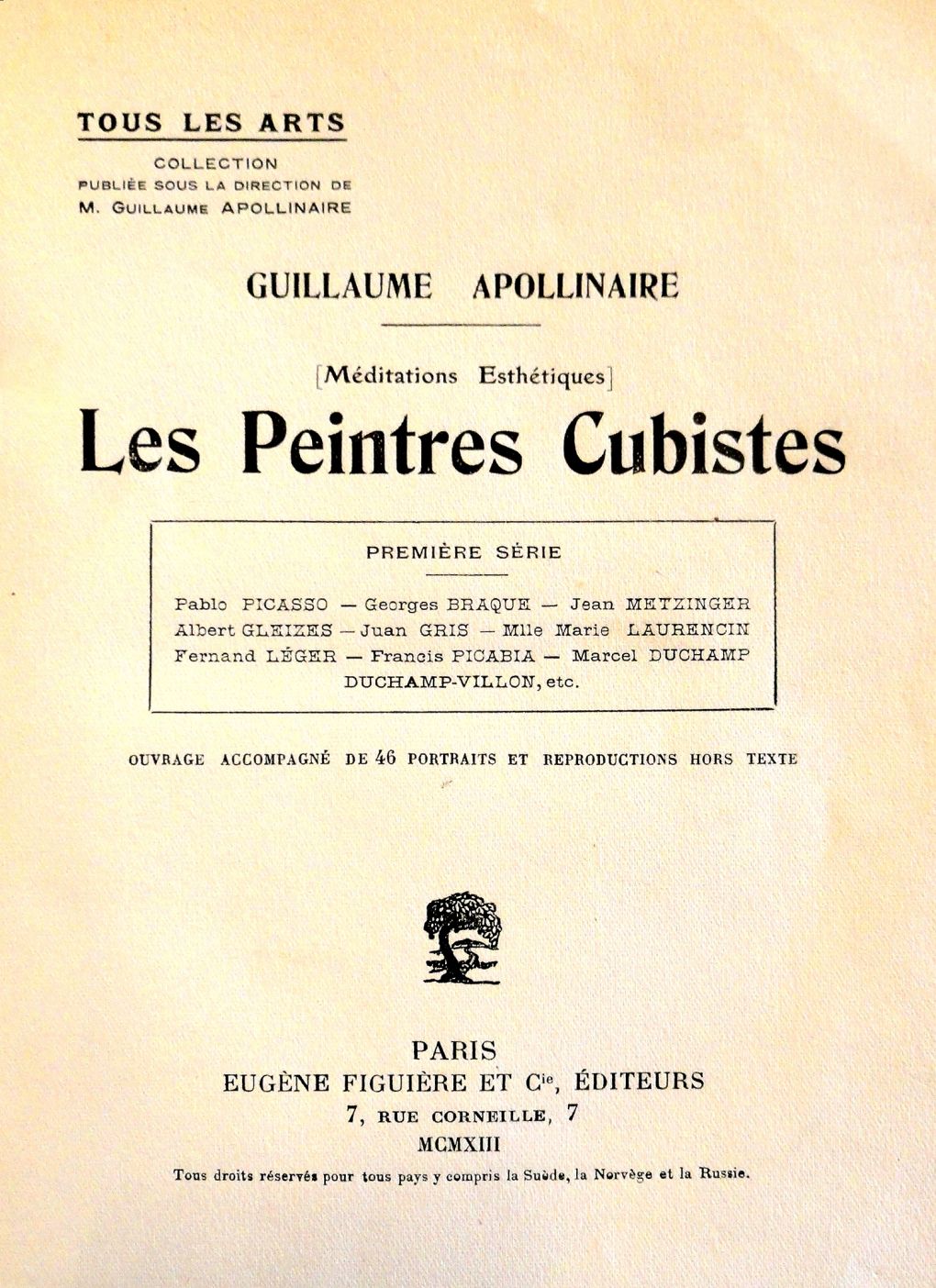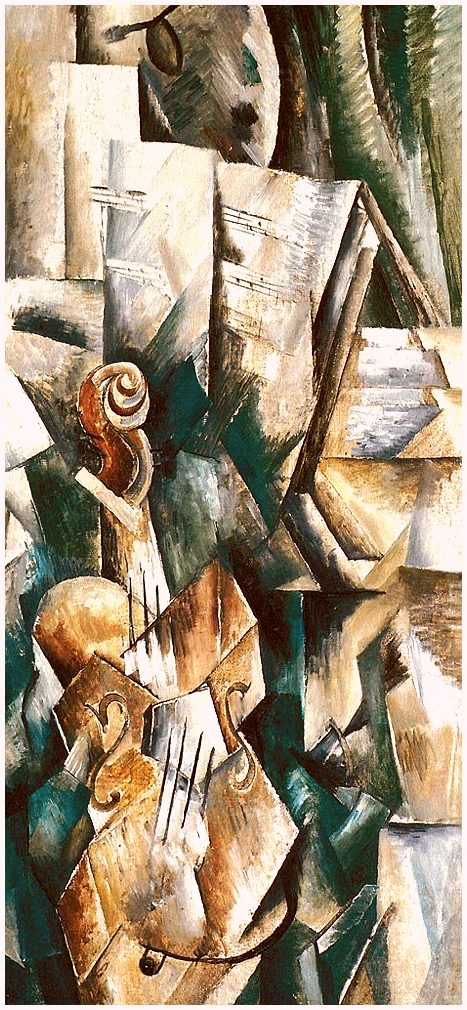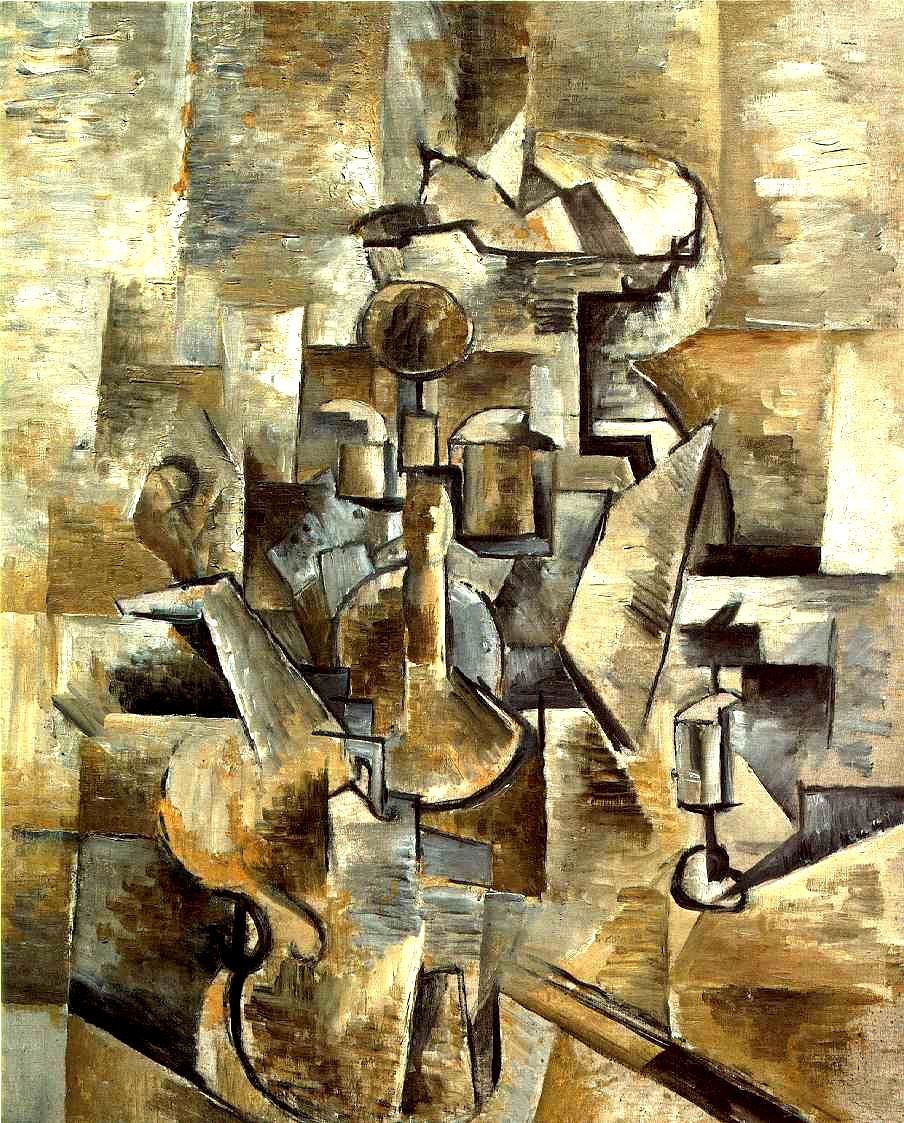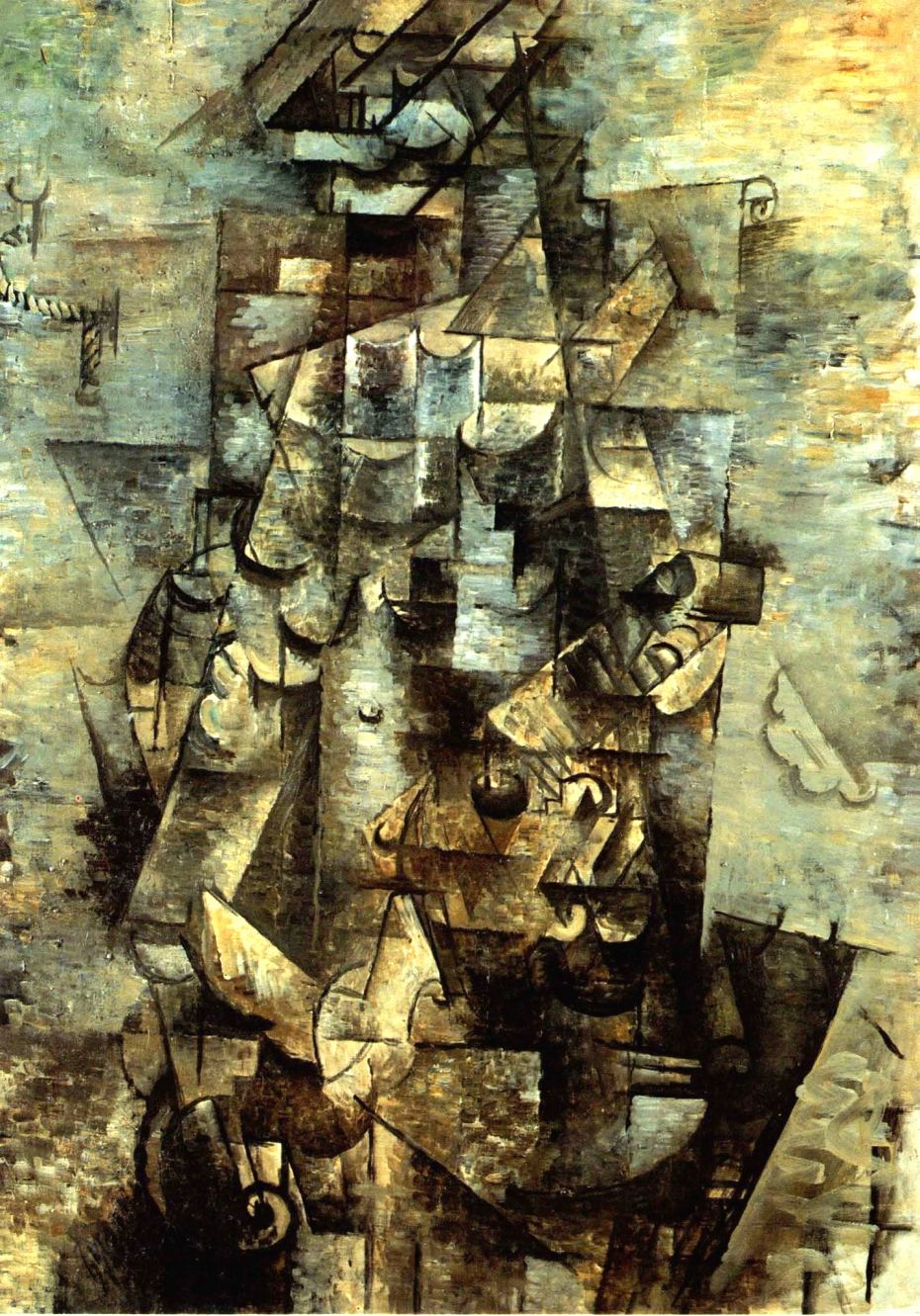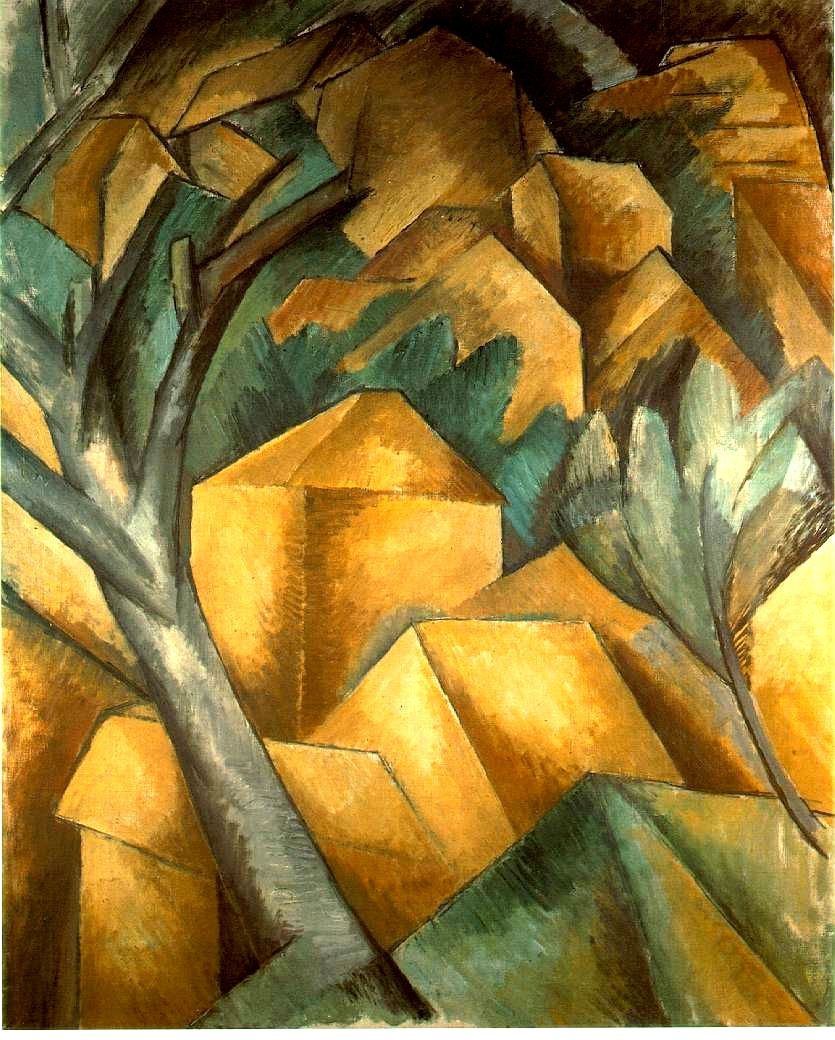The Manifesto Cubist
of the Guillaume Apollinaire
Georges Braque
Violin-and-palette-1909
Georges Braque
Violin and candlestick 1910
Georges Braque
Homme a la guitare
Georges Braque
Houses at estaque 1908
Georges Braque
Violin-and-pitcher-1910
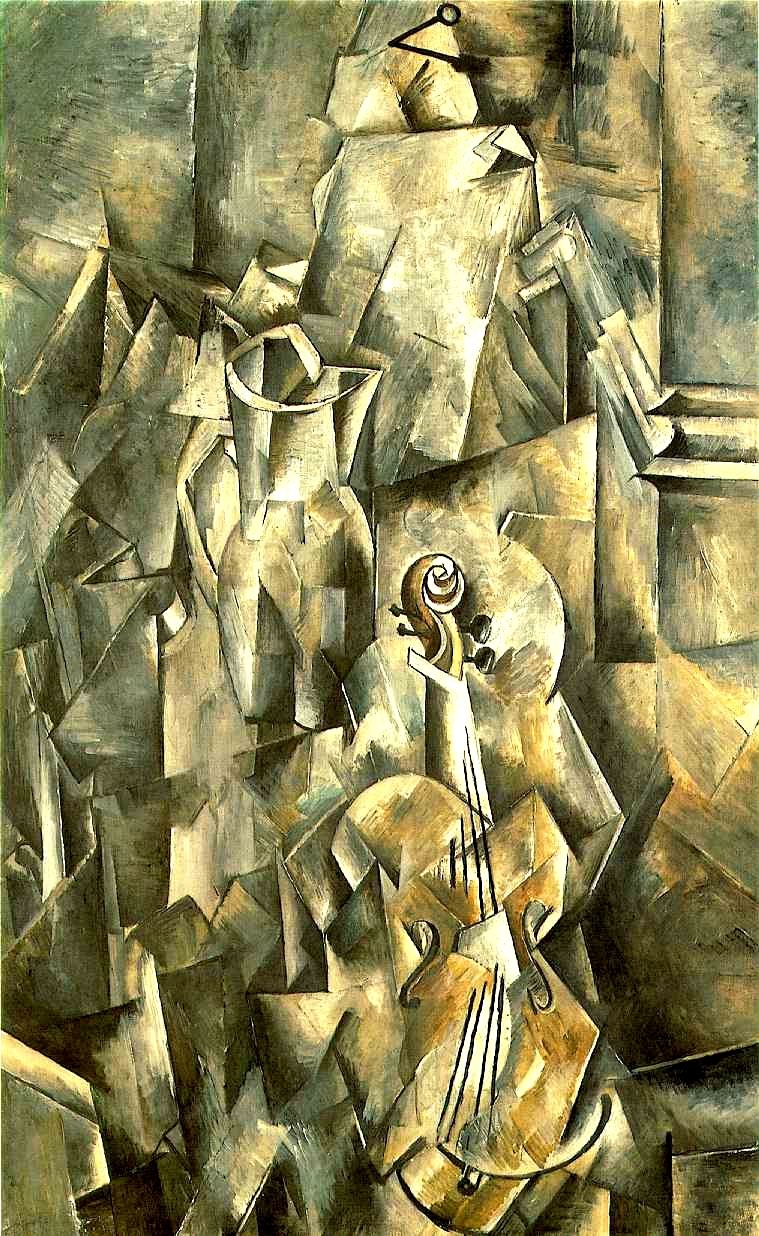
GEORGES BRAQUE
Argenteuil 1882
Paris 1963
BIOGRAPHY
Georges Braque was born in Argenteuil on
May 13, 1882. The family moves to Le Havre
in 1890 where the young boy has his first
encounters with paint and brushes in his
father's painting business. He attends lectures
at the Le Havre Art Academy as of 1899, a
short time later he starts to work for a
decoration painter. Georges Braque goes to
Paris in 1900, and continues his apprenticeship
as a decoration painter, he attends drawing
classes at the school of Batignolles, followed
by studying at the Académie Humbert.
Georges Braque sees works of the "Fauves"
in the Salon d'Automne in 1905, which impress
him so much that he takes on their bright
colours in his works. He spends the fall
of 1906 painting in L'Estaque, in the footsteps
of Paul Cézanne, whose paintings he also
admires. Together with the "Fauves",
he exhibits in the Salon des Indépendants
in 1907. He spends the summer and the fall
of this year in L'Estaque again. It is also
in 1907 that he meets Pablo Picasso, encountering
his painting "Les Demoiselles d'Avignon".
A close friendship between Georges Braque
and Pablo Picasso begins, in their artistic
co-operation and especially by closely examining
the art of Paul Cézanne, they develop the
Cubist style of painting. They exhibit in
the gallery of Daniel-Henry Kahnweiler in
Paris in 1908.
Braque's and Picasso's close co-operation
lasts until 1914, some works from this period
of "analytic Cubism" (1909-1912)
are hard to clearly ascribe to one or the
other artist, their painting becomes more
and more abstract. Georges Braque adds letters
to his pictures, drawn labels or Trompe-l'oeil
effects, a technique that is then also taken
on by Picasso. The period of "synthetic
Cubism" follows as of 1912, a period
during which Braque makes paper collages,
the "Papiers collés", which are
again taken on and developed by Picasso.
They integrate other materials such as paper,
wood, or sand into their paintings.
clarinet-and-bottle-of-rum-on-a-mantelpiece-1911
serves in World War I, he suffers a severe
head injury followed by a long period of
convalescence. He only picks up painting
again as of 1917, making works that he will
only present in public as of 1923. He becomes
detached from Cubism, his works undergoing
permanent changes over the following time.
Besides paintings, Braque also creates an
extensive graphic oeuvre as of 1912, making
etchings, also in colors, lithographs and
woodcuts. As of 1939 he begins to deal intensively
with sculpting and pottery. He makes the
"Stuio pictures" as of 1949.
clarinet-and-bottle-of-rum-on-a-mantelpiece-1911
dies in Paris on August 31, 1963.
Georges Braque was a 20th century French
painter best known for inventing Cubism with
Pablo Picasso.
Georges Braque was a 20th century French
painter who invented Cubism with Pablo Picasso.
Along with Cubism, Braque used the styles
of Impressionism, Fauvism and collage, and
even staged designs for the Ballet Russes.
Through his career, his style changed to
portray somber subjects during wartime and
lighter, freer themes in between. He never
strayed far from Cubism, as there were always
aspects of it in his works. Braque died on
August 31, 1963, in Paris.
Georges Braque was a French painter born
on May 13, 1882, in Argenteuil, France. He
spent his childhood in Le Havre and planned
to follow in the footsteps of his father
and grandfather by becoming a house painter.
From about 1897 to 1899, Braque studied painting
at the École des Beaux-Arts in the evenings.
Wanting to pursue artistic painting further,
he moved to Paris and apprenticed with a
master decorator before painting at the Académie
Humbert from 1902 to 1904.
Braque started his art career using an Impressionistic
painting style. Circa 1905, he transitioned
into a Fauvist style after viewing works
exhibited by the Fauves, a group that included
such notable artists as Henri Matisse and
André Derain. The Fauves' style incorporated
bold colors and loose-form structures to
emulate deep emotions.
Braque's first solo show took place in 1908
at Daniel-Henry Kahnweiler's gallery. From
1909 to 1914, Braque and fellow artist Pablo
Picasso collaborated to develop Cubism as
well as to incorporate collage elements and
papier collé (pasted paper) into their pieces.
Braque's style changed after World War I,
when his art became less structured and planned.
A successful exhibition in 1922 at the Salon
d'Automne in Paris garnered him much acclaim.
A few years later, renowned dancer and choreographer
Sergei Diaghilev asked Braque to design decor
for two of his ballets at the Ballets Russes.
The end of the 1920s saw another style change
as Braque began painting more realistic interpretations
of nature, though he never strayed far from
Cubism, as there were always aspects of it
in his works.
Braque started to engrave plaster in 1931,
and his first significant show took place
two years later at the Kunsthalle Basel.
He gained international fame, winning first
prize in 1937 at the Carnegie International
in Pittsburgh.
The advent of World War II influenced Braque
to paint more somber scenes. After the war,
he painted lighter subjects of birds, landscapes
and the sea. Braque also created lithographs,
sculptures and stained-glass windows.
The close collaboration between Picasso and
Braque beginning in 1909 was crucial to the
style's genesis. The two artists met regularly
to discuss their progress, and at times it
became hard to distinguish the work of one
artist from another (as they liked it). Both
were living in the bohemian Montmartre section
of Paris in the years before and during World
War I, making their collaboration easy.
In 1912, Kahnweiler gave his first public
interview on Cubism, no doubt in response
to growing public interest in (and some recognition
of) the movement. When World War I began,
Kahnweiler, as a German, was exiled from
France. During the war, Léonce Rosenberg
became the main dealer for Cubist art in
Paris (including those of the Salon Cubists)
with his brother Paul Rosenberg serving as
Picasso's dealer during the interwar years.
Though Picasso and Braque returned to Cubist
forms periodically throughout their careers
and there were some exhibitions of work up
until 1925, the two-man movement did not
last much beyond World War I.
Salon or Section d'Or Cubism
The Salon Cubists, so-called because they
showed their works at public exhibits such
as the Salon d'Automne, did not work closely
with Picasso and Braque but were influenced
by their experiments. It was through the
work of the Salon Cubists that the movement
became widely known to the public in the
early 1910s. These artists included Robert
Delaunay, Albert Gleizes, Fernand Léger,
Juan Gris, Henri Le Fauconnier, Robert de
La Fresnaye, and Jean Metzinger. Metzinger
and Delaunay, who had been friends at least
since 1906, began collaborating with Gleizes
as a result of the yearly Salon d'Automne.
It was through Gleizes that they met Le Fauconnier
who had published Note sur la peinture (1910)
in which he praised Picasso and Braque for
their "total emancipation" of painting.
These artists exhibited together at the 1911
Salon des Independants, introducing Cubism
to the general public. The Independants was
a non-juried exhibition where public reaction
depended on how and where paintings were
hung. The Cubists got control of the hanging
committee from the Neo-Impressionists so
that their works could be hung together in
one room as a coherent school. The paintings
created a stir, as Gleizes noted: "While
the newspapers sounded the alarm to alert
people to the danger, and while appeals were
made to the public authorities to do something
about it, song writers, satirists and other
men of wit and spirit provoked great pleasure
among the leisured classes by playing with
the word 'cube', discovering that it was
a very suitable vehicle for inducing laughter
which, as we all know, is the principle characteristic
that distinguishes man from the animals."
In addition to showing their works in large
exhibitions, the Salon Cubists were also
distinct from Picasso and Braque in that
they often worked on a large scale, leading
one art historian to coin the term 'Epic
Cubism' to distinguish their work from the
more intimate paintings of Picasso and Braque.
While they broke apart objects and bodies
into geometric forms like those of Picasso
and Braque, the Salon Cubists did not challenge
Renaissance conceptions of space to the same
extent nor did they embrace the monochromatic
color of Analytic Cubism or the collage elements
of Synthetic Cubism.
At the end of 1911 Gleizes and Metzinger,
who lived closely together in the Parisian
suburbs, and others in the group began meeting
in Puteaux, a suburb where the painter and
engraver Jacques Villon and his brother,
the sculptor Raymond Duchamp-Villon had their
studios (leading to them sometimes being
called the Puteaux group). It is likely as
a result of these meetings that the main
ideas for Metzinger and Gleizes' On Cubism
(1912) were formalized; it was the first
published statement about the style.
The next year the group also planned the
launch of the Salon de la Section d'Or (1912)
that would bring together the most radical
currents in painting. The term Section d'Or
was a name the Salon Cubists adopted to show
their attachment to the golden mean, i.e.
the belief in order and the importance of
mathematical proportions in their works that
reflected those in nature. The Section d'Or
exhibit was held after the 1912 Salon d'Automne
at the Galerie La Boetie. It was at this
exhibit that the art critic Guillaume Apollinaire
coined the term Orphism to refer to the work
of Delaunay. The next year Apollinaire published
Aesthetic Meditations: The Cubist Painters
(1913). These many exhibits and publications
were calculated to make an impact, both in
Paris and abroad.
As with the Cubism of Picasso and Braque,
the Salon or Section d'Or group did not continue
coherently after WWI, having only sporadic
exhibits between 1918 and 1925.
Styles
The various stages of development in the
Cubist style are based on the work of Picasso
and Braque rather than on those of the Salon
Cubists. The exact names and dates of the
stages are debated and continually reframed
to this day.
Cezannian Cubism (1908 -1909)
This early phase of the movement came in
the wake of the Paul Cézanne retrospective
in 1907 when many artists were reintroduced
or introduced for the first time to the work
of Cézanne, who had been living in Aix-en-Provence
in the south of France before his death and
had not exhibited in Paris for many years.
Several artists who saw the retrospective
were influenced by his lack of three-dimensionality,
the material quality of his brushwork, and
his use of uniform brushstrokes. Braque's
Houses at L'Estaque (1908) is a good example
of this type of Cubism.
Analytic Cubism (1910- 1912)
In this phase, Cubism developed in a highly
systematic fashion. Later to be known as
the Analytic period of the style, it was
based on close observation of objects in
their background contexts, often showing
them from various vantage points. Picasso
and Braque restricted their subject matter
to the traditional genres of portraiture
and still life and also limited their palette
to earth tones and muted grays in order to
lessen the clarity between the fragmented
shapes of figures and objects. Although their
works were often similar in appearance, their
separate interests showed through over time.
Braque tended to show objects exploding out
or pulled apart into fragments, while Picasso
rendered them magnetized, with attracting
forces compelling elements of the pictorial
space into the center of the composition.
Works in this style include Braque's Violin
and Palette (1909) and Picasso's Ma Jolie
(1911-12).
Towards the end of this stage of Cubism,
Juan Gris began to make contributions to
the style: he maintained a sharp clarity
to his forms, provided suggestions of a compositional
grid, and introduced more color to what had
been an austere, monochromatic style.
Synthetic Cubism (c. 1912 - c. 1914)
In 1912 both Picasso and Braque began to
introduce foreign elements into their compositions,
continuing their experiments with multiple
perspectives. Picasso incorporated wall paper
that imitated chair caning into Still Life
with Chair-Caning (1912), thus initiating
Cubist collage, and Braque began to glue
newspaper to his canvases, beginning the
movement's exploration of papier-colle. In
part this may have resulted from the artists'
growing discomfort with the radical abstraction
of Analytic Cubism, though it could also
be argued that these Synthetic experiments
touched off an even more radical turn away
from Renaissance depictions of space, and
towards a more conceptual rendering of objects
and figures. Picasso's experiments with sculpture
are also included as part of the Synthetic
Cubist style as they employ collaged elements.
Crystal Cubism (1915 -1922)
As a response to the chaos of war, there
was a tendency among many French artists
to pull back from radical experimentation;
this inclination was not unique to Cubism.
One art historian has described this stage
of Cubism as the "end product of a progressive
closing down of possibilities." In Léger's
Three Women (1921), for example, the depicted
subjects are hard-edged rather than resembling
overlapping bits of low-relief sculpture;
Léger also did not attempt to show objects
from various angles. Crystal Cubism is associated
with Salon Cubism as well as with the works
of Picasso and Braque. Crystal Cubism is
part of the larger trend known as a "Return
to Order" that was associated with artists
in the School of Paris.
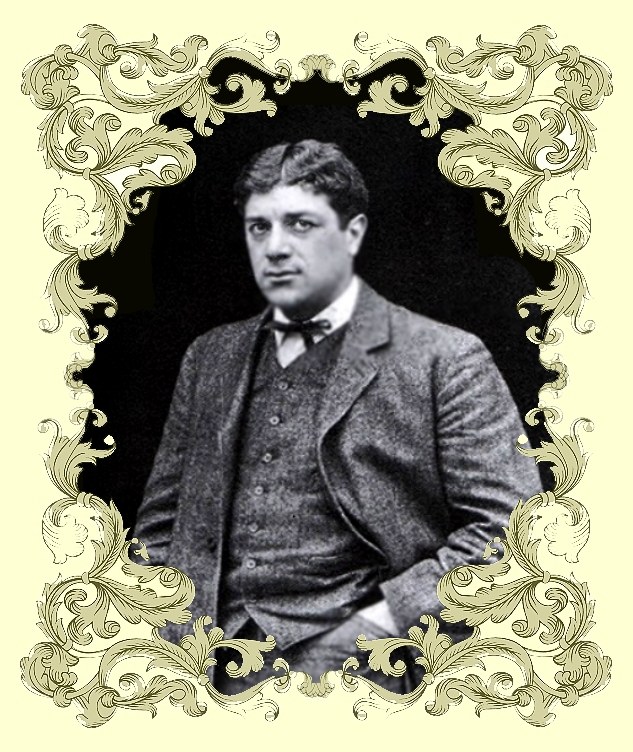
THE CUBISM

IN ARTE EST LIBERTAS
ARTENCYCLOPAEDIA
MOVEMENTS-ARTISTS
